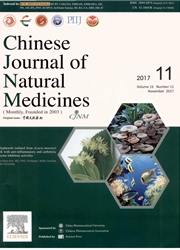

 中文摘要:
中文摘要:
In the 1970 s, artemisinin(‘‘qinghaosu’’ in Chinese), a sesquiterpene lactone with an unusual peroxide bridge, was isolated from Artemisia annua L. It showed promising antimalarial activity, particularly by eliminating parasites resistant to chloroquine. For more than 30 years,artemisinin has contributed to worldwide health as a new type of antimalarial drug. Artemisinin and its analogs, such as dihydroartemisinin, artemether, artesunate, artemiside,artemisone, and arteether, possess not only potent antimalarial activity but also anti-viral, antifungal, anticancer,and anti-inflammatory properties. In this review, we discuss the current understanding of how artemisinin and its analogs affect the immune system and immune-related diseases.
 英文摘要:
英文摘要:
In the 1970s, artemisinin ("qinghaosu" in Chi- nese), a sesquiterpene lactone with an unusual peroxide bridge, was isolated from Artemisia annua L. It showed promising antimalarial activity, particularly by eliminating parasites resistant to chloroquine. For more than 30 years, artemisinin has contributed to worldwide health as a new type of antimalarial drug. Artemisinin and its analogs, such as dihydroartemisinin, artemether, artesunate, artemiside, artemisone, and arteether, possess not only potent anti- malarial activity but also anti-viral, antifungal, anticancer, and anti-inflammatory properties. In this review, we dis- cuss the current understanding of how artemisinin and its analogs affect the immune system and immune-related diseases.
 同期刊论文项目
同期刊论文项目
 同项目期刊论文
同项目期刊论文
 期刊信息
期刊信息
